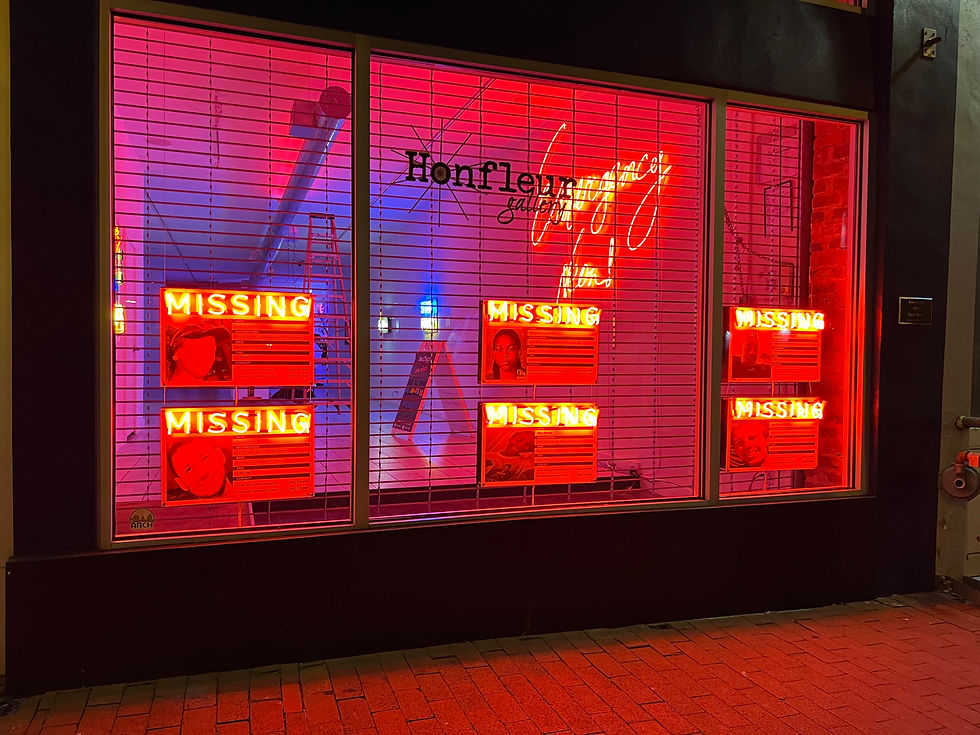Craig Kraft studio

Sept 30 - Nov 5, 2022
Opening: Fri, Sept 30,
6 - 8pm
Honfleur Gallery
1241 Good Hope Rd SE,
Washington, DC 20020
Honfleur Gallery presents a solo exhibition by internationally acclaimed light sculptor Craig Kraft.
Kraft, a Smithsonian instructor for the past 24 years, has used neon light to create monumental outdoor light sculptures, such as Vivace sited at the Watha T. Daniel Library in DC, but now turns his attention to pressing social and political issues such as ignored and unaccounted for missing children, Climate Change, Russia’s invasion of Ukraine, Trump in American politics, and finding HOPE against all odds.


Terence Nicholson introduces Craig Kraft at the opening for Emergency Neon


Emergency Neon Review by Mark Jenkins, Published in the Washington Post:
For almost 40 years, Craig Kraft has shaped glass tubes into sculptures that are illuminated by neon, drawing from such diverse inspirations as graffiti, cave paintings and endangered creatures. That the artist’s recent work is more immediate is suggested by the title of his new show, “Emergency Neon.” Gun proliferation, lost or abducted people, and Russia’s invasion of Ukraine are among the subjects explored at Honfleur Gallery, which is next door to Kraft’s studio.
Red-neon “Missing Persons” notices glow in the venue’s window. Inside, “Stop Putin” is spelled out in the yellow and blue of the Ukrainian flag, and a handgun outlined in pulsing red light has its barrel twisted, so it can’t fire. More conceptual is “Finding Hope,” its title noun etched in white, which is designed to be mounted in what the artist calls “unlikely places” where it can be discovered and documented on social media. In a collaboration, Kraft added neon flames to the hair, tie and shoes in Luis Del Valle’s painting of Donald Trump.
The window of Kraft’s studio displays the outlined head of an African elephant, a threatened species. Environmental degradation also is the theme of the Honfleur show’s most complex offering, “Climate Change.” The artist piled and mounted metal and wood storm debris, which is backlighted in pink and blue, and punctuated by three lightning bolts: jagged white-colored tubes with red-glowing ones coiled around them. The white light travels down the vertical tubing like electricity crackling from sky to earth, endowing the installation with movement and a hint of menace. If most of “Emergency Neon’s” pieces are simple placards written in neon, “Climate Change” is a multi-act drama.
Philadelphia Fine Art Fair:
The Urge to Mark Entrance Exhibition




Drawn By Light:
A 24 Year Retrospective
Susan Calloway Fine Arts
1643 Wisconsin Ave. NW
Washington D.C.
November 30 - December 30, 2018




The Urge to Mark
King Street Gallery
The Morris and Gwendolyn Cafritz Foundation Arts Center
Takoma Park/Silver Spring Campus
Montgomery College
October 22- November 21, 2018




